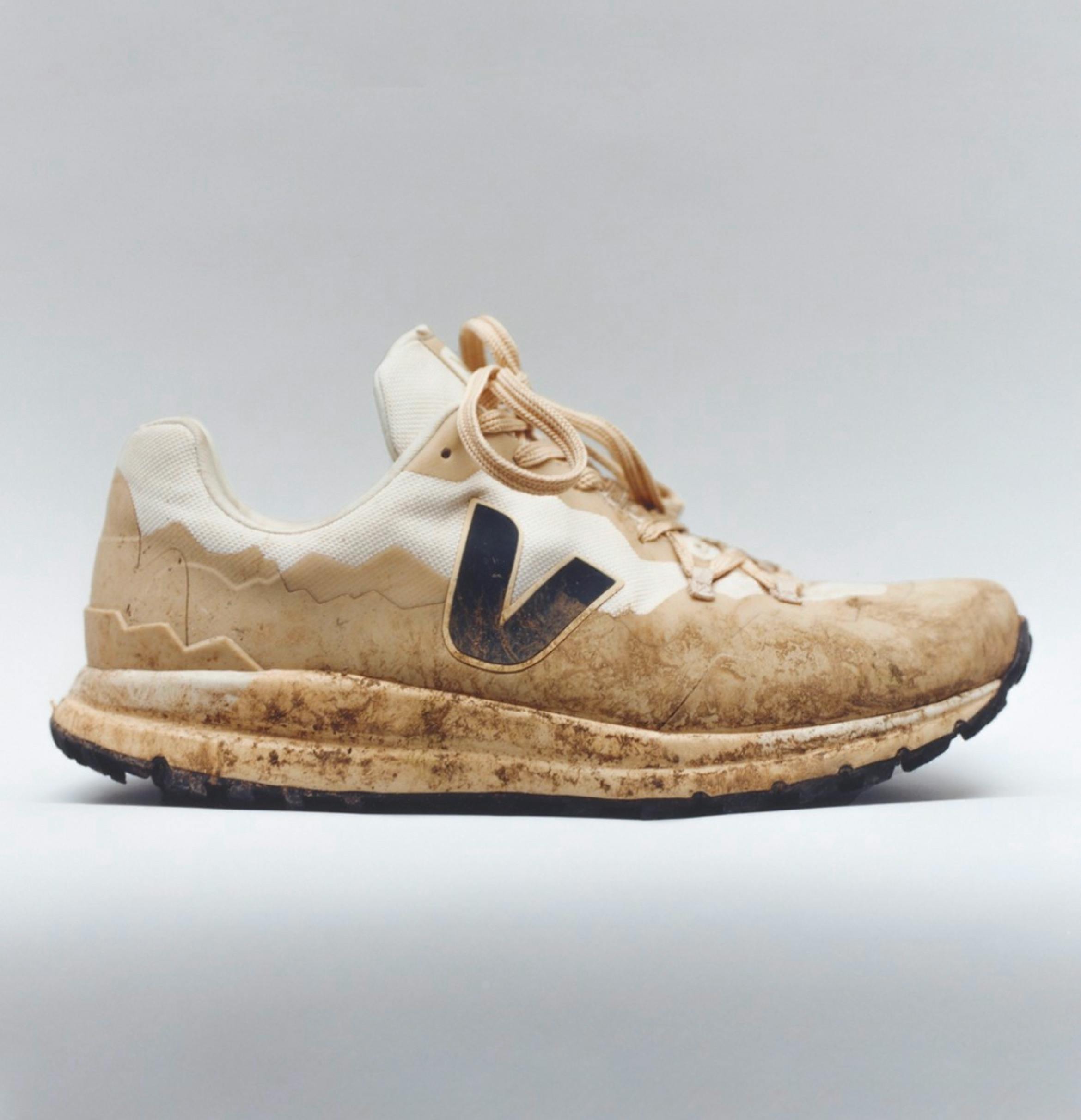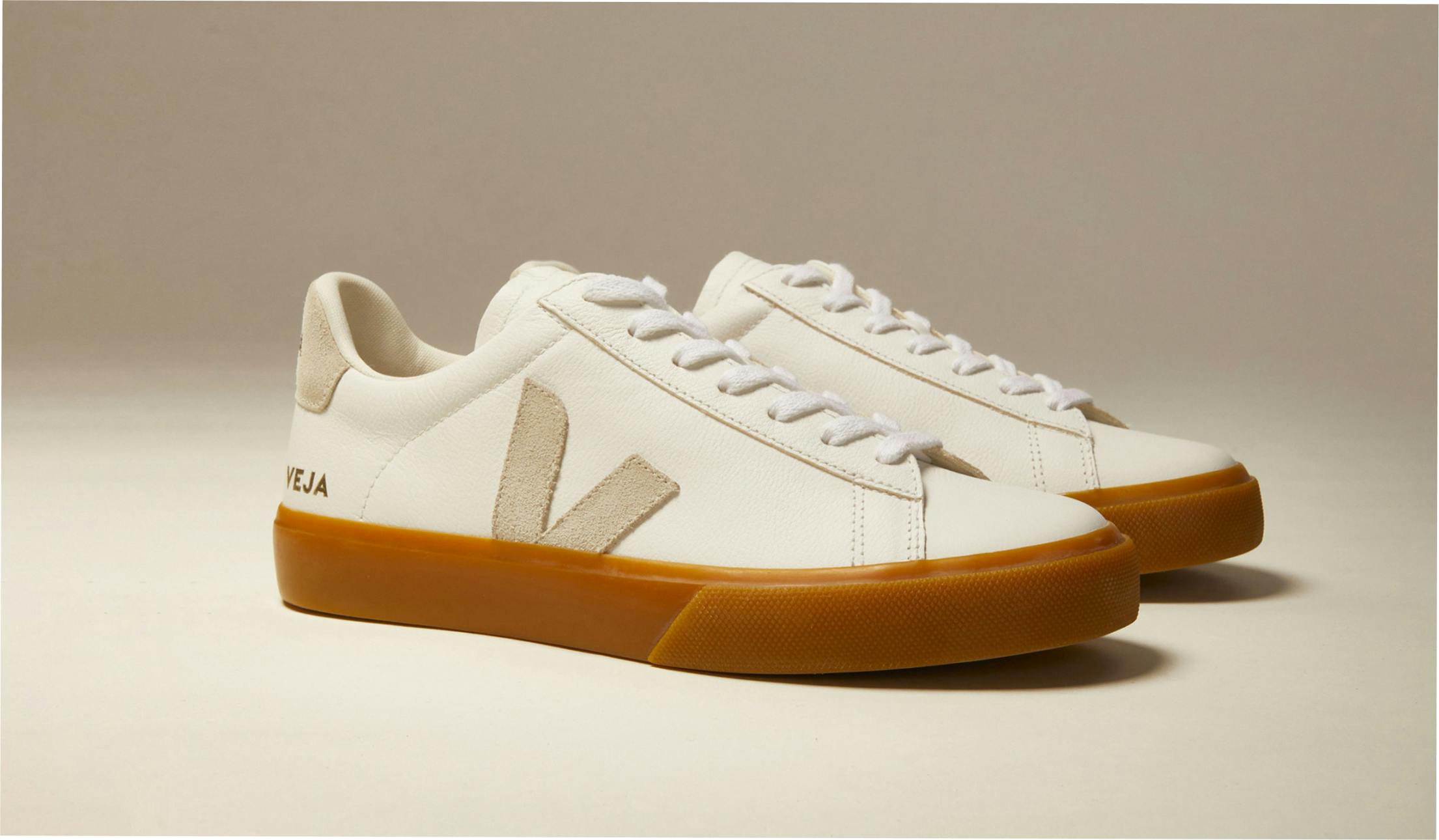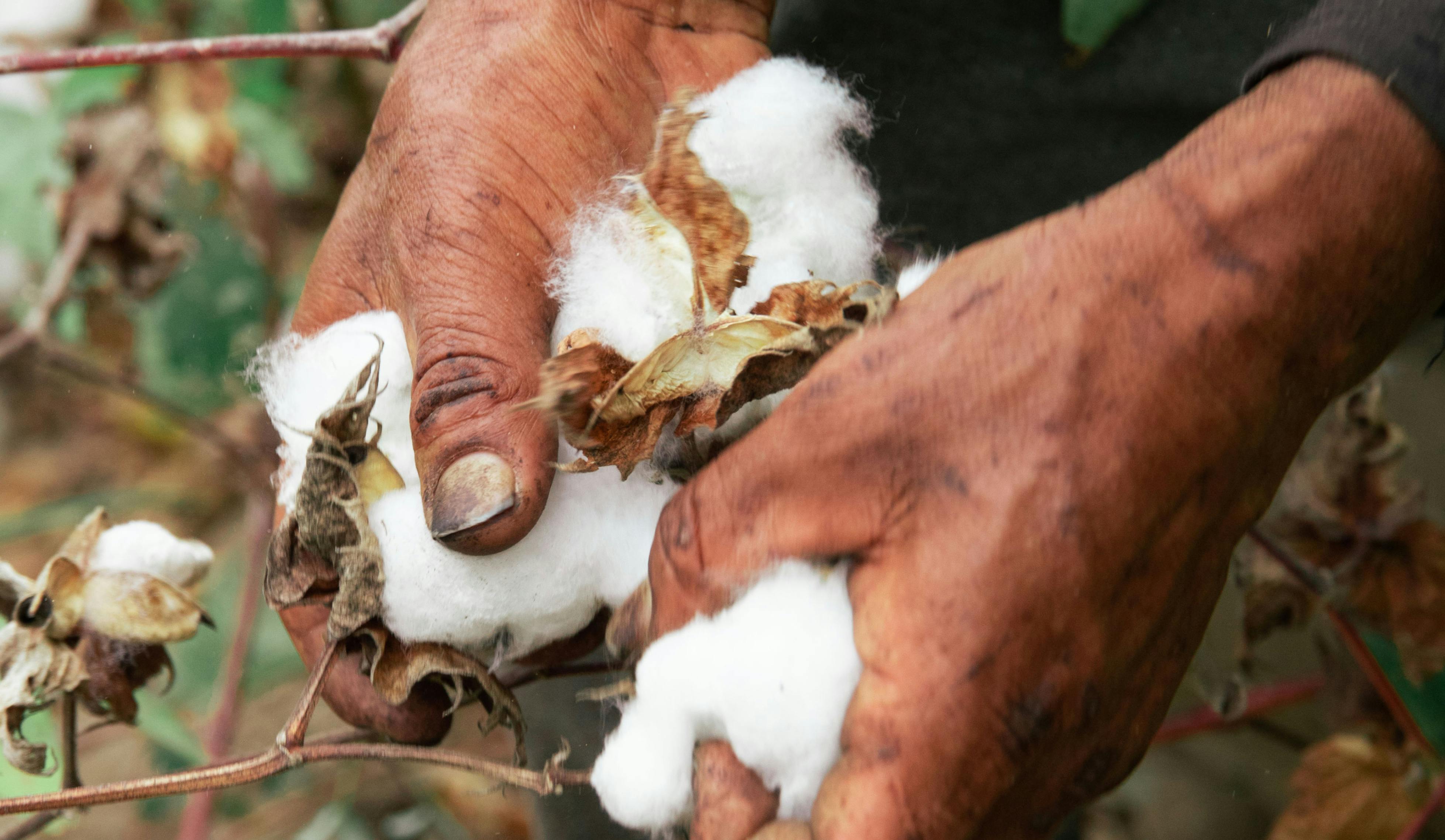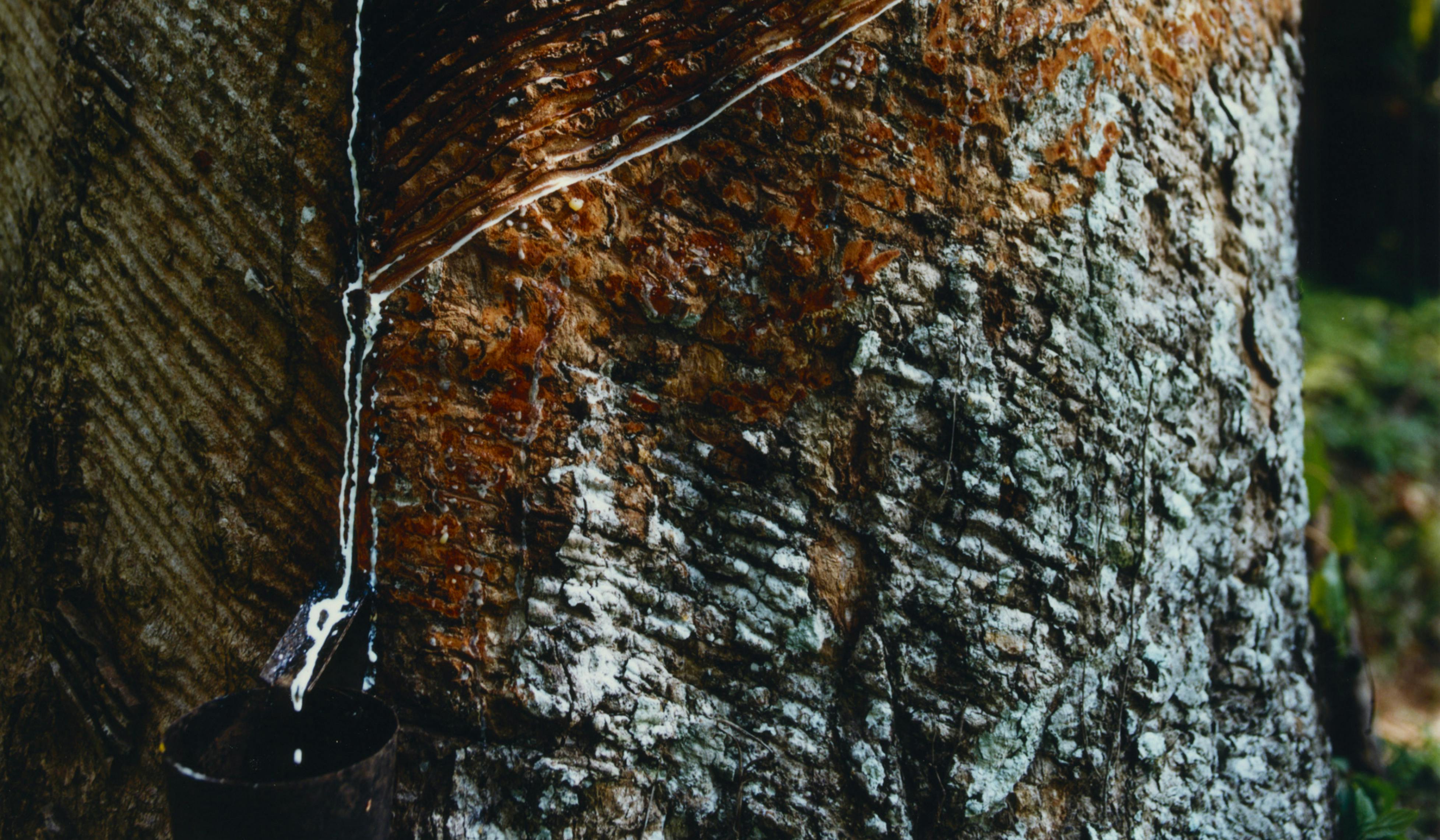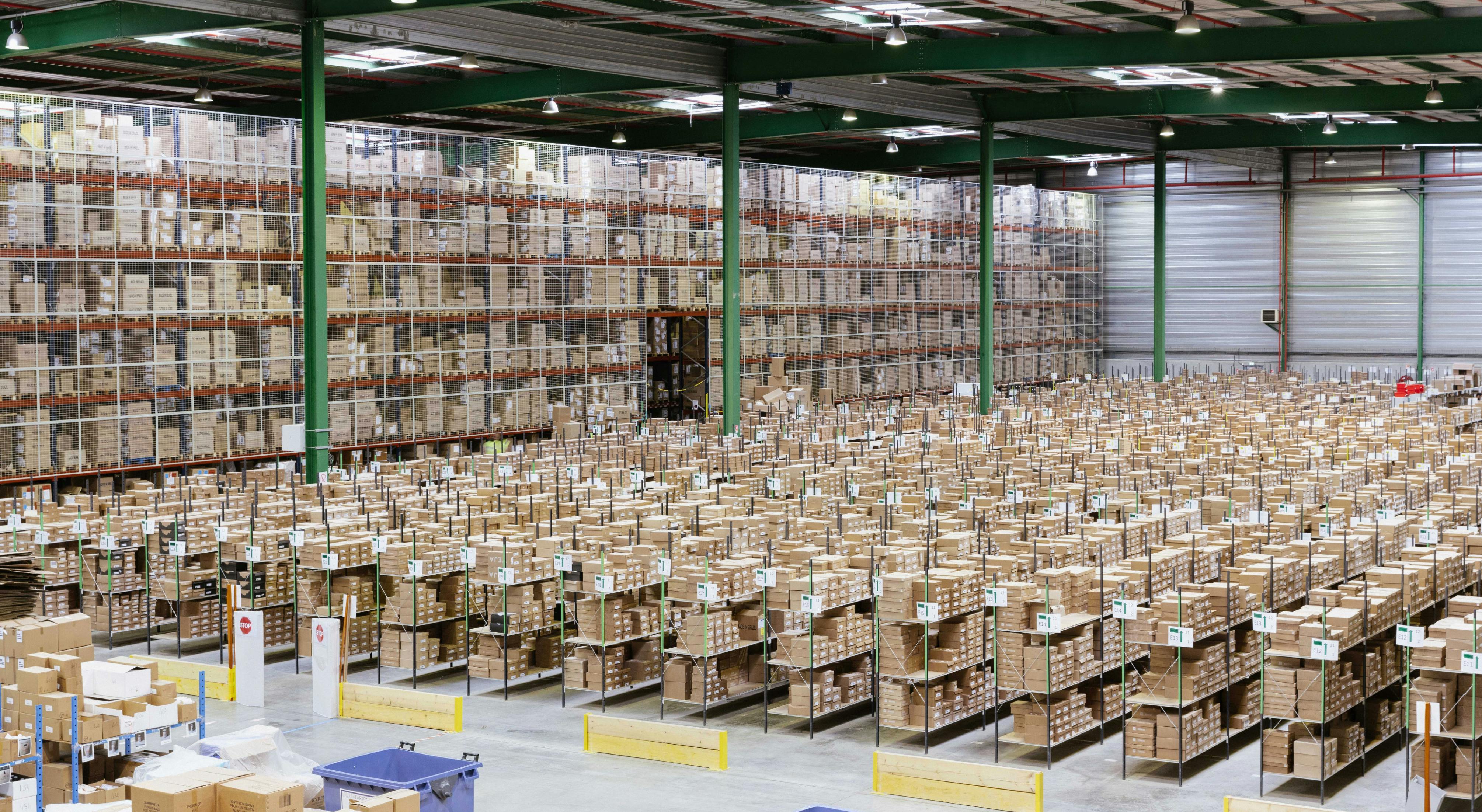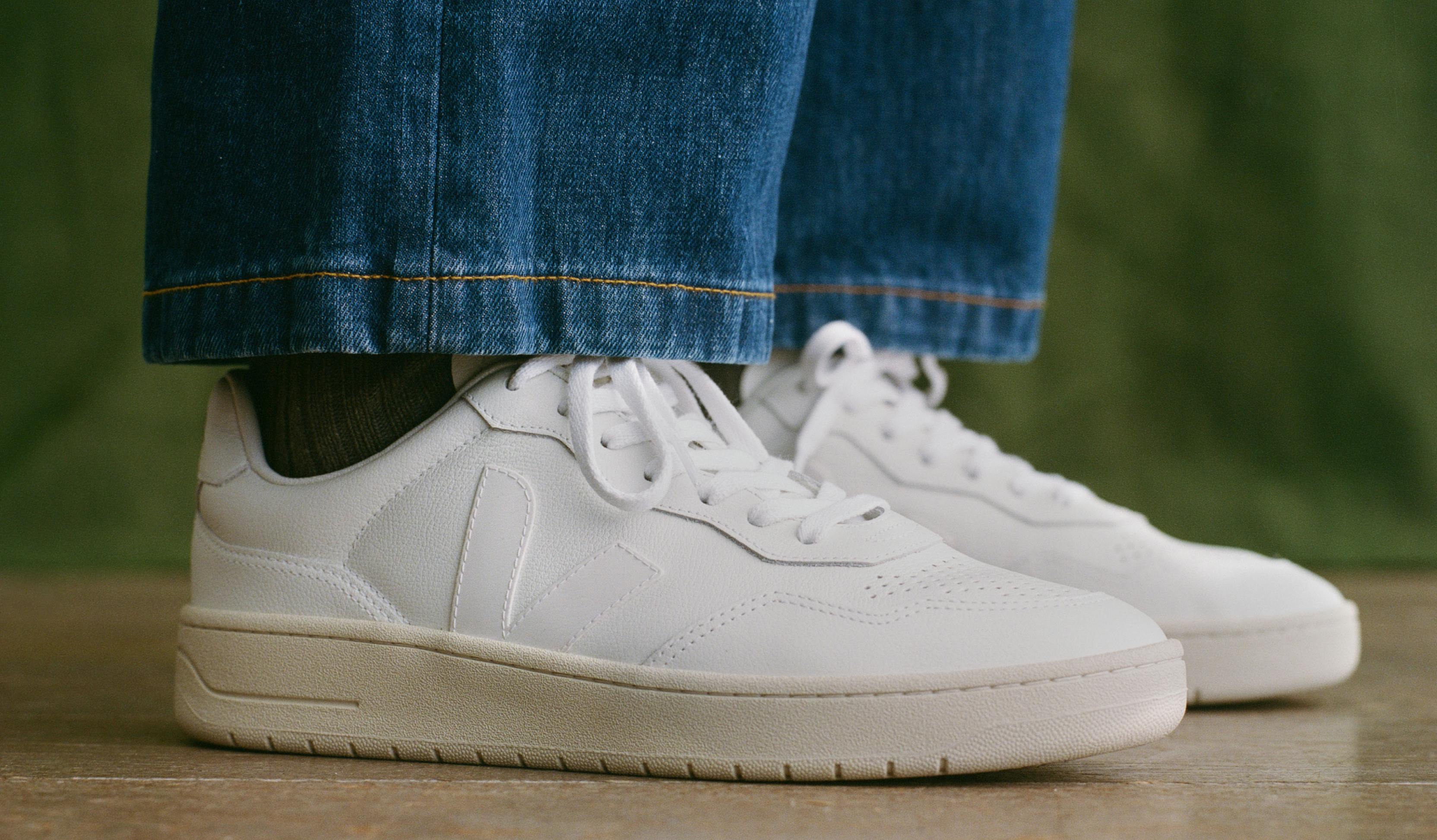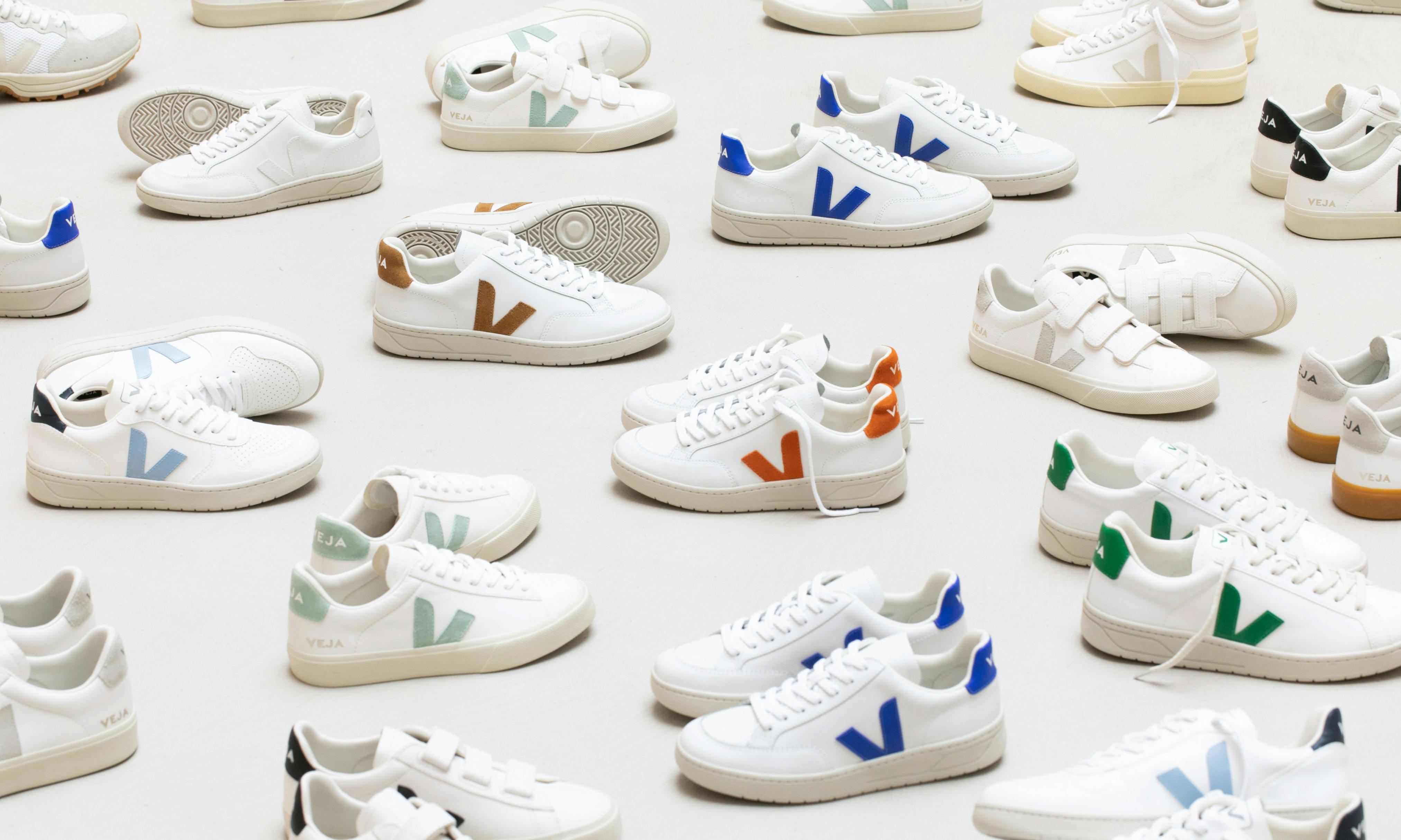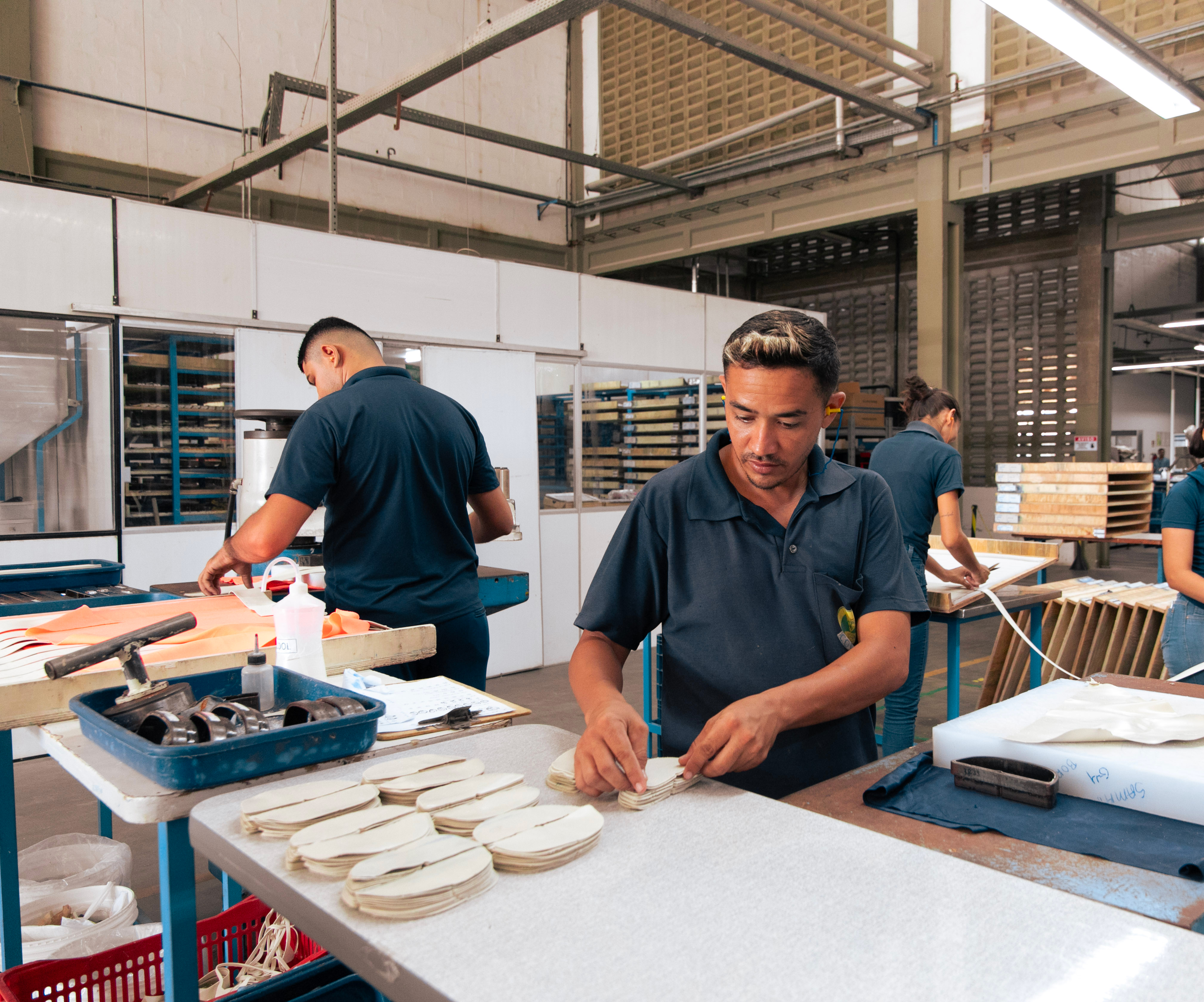
Limites
Os Limites da VEJA
A VEJA está em constante transformação e tem plena consciência dos limites inerentes ao próprio projeto.
Fabricação
Os ilhoses não contêm níquel, mas são feitos de metal que não foi adquirido diretamente por nós.
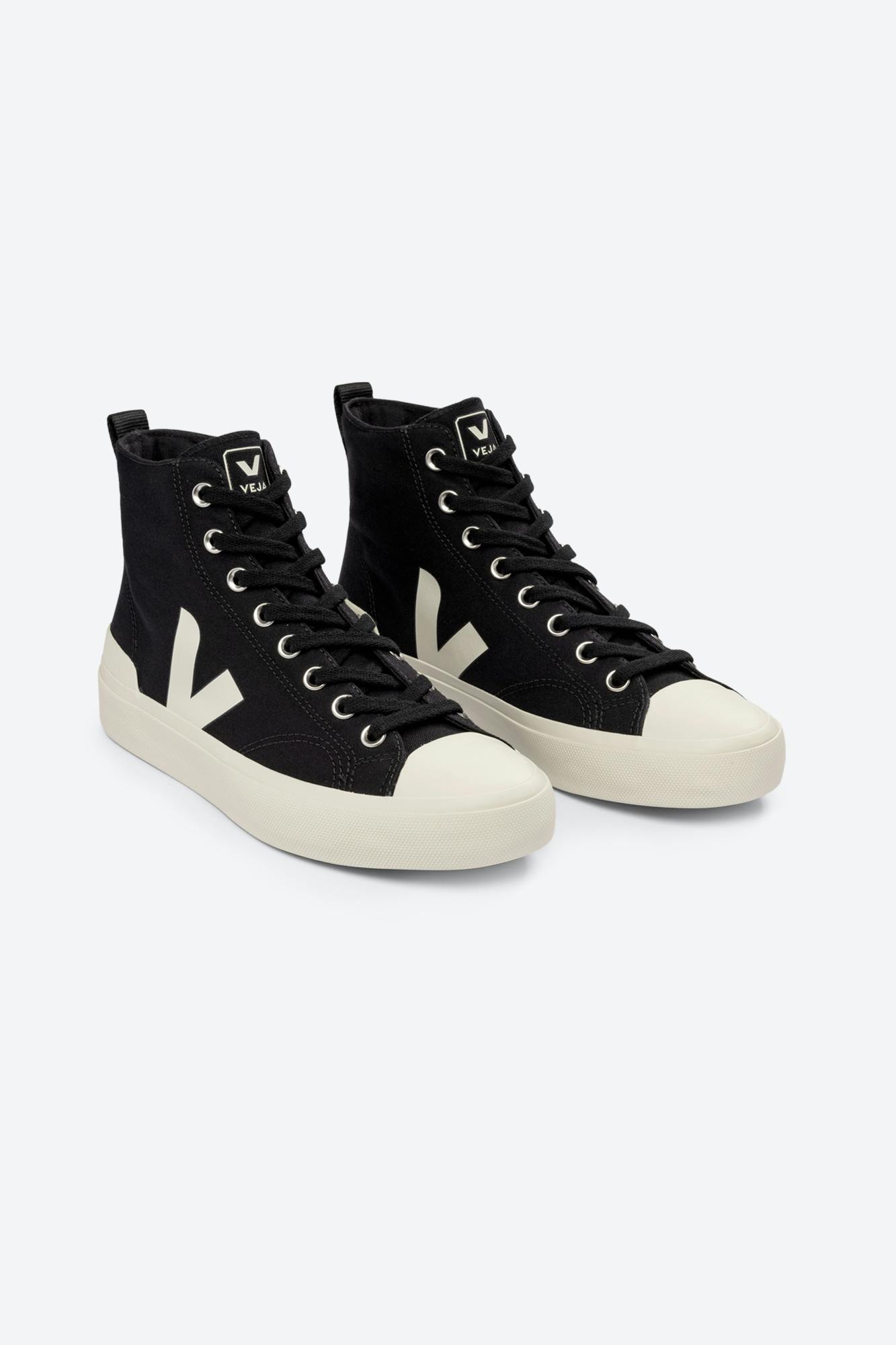
Paraísos fiscais
Desde a criação da VEJA, sempre buscamos trabalhar com bancos que não possuem filiais em paraísos fiscais.
Por isso, o NEF sempre foi nosso parceiro principal para o financiamento das operações, e também trabalhamos com o Crédit Coopératif.
Por outro lado, nosso site de e-commerce ainda depende de parceiros bancários com filiais em paraísos fiscais. Na prática, a VEJA vende para o mundo inteiro, e nossos parceiros habituais não oferecem o mesmo nível de serviço.
Corantes
Os pigmentos usados para tingir o couro, a borracha e o algodão não são produtos naturais.
Em 2012 e 2013, usamos corantes naturais feitos de plantas e minerais em 40% da nossa produção, mas a qualidade dos tons vermelhos não atingiu nossos padrões.
Para obter cores estáveis e duradouras, a VEJA atualmente precisa usar corantes convencionais, que obedecem às normas de segurança e não contêm substâncias perigosas ou proibidas.

Tannery
2011
© Cédric Amiot
Couro
De 2008 a 2015, 100% do couro da VEJA era curtido com taninos vegetais.
No entanto, desde 2015, devido ao alto custo e à qualidade insuficiente, tivemos que rever essa decisão.
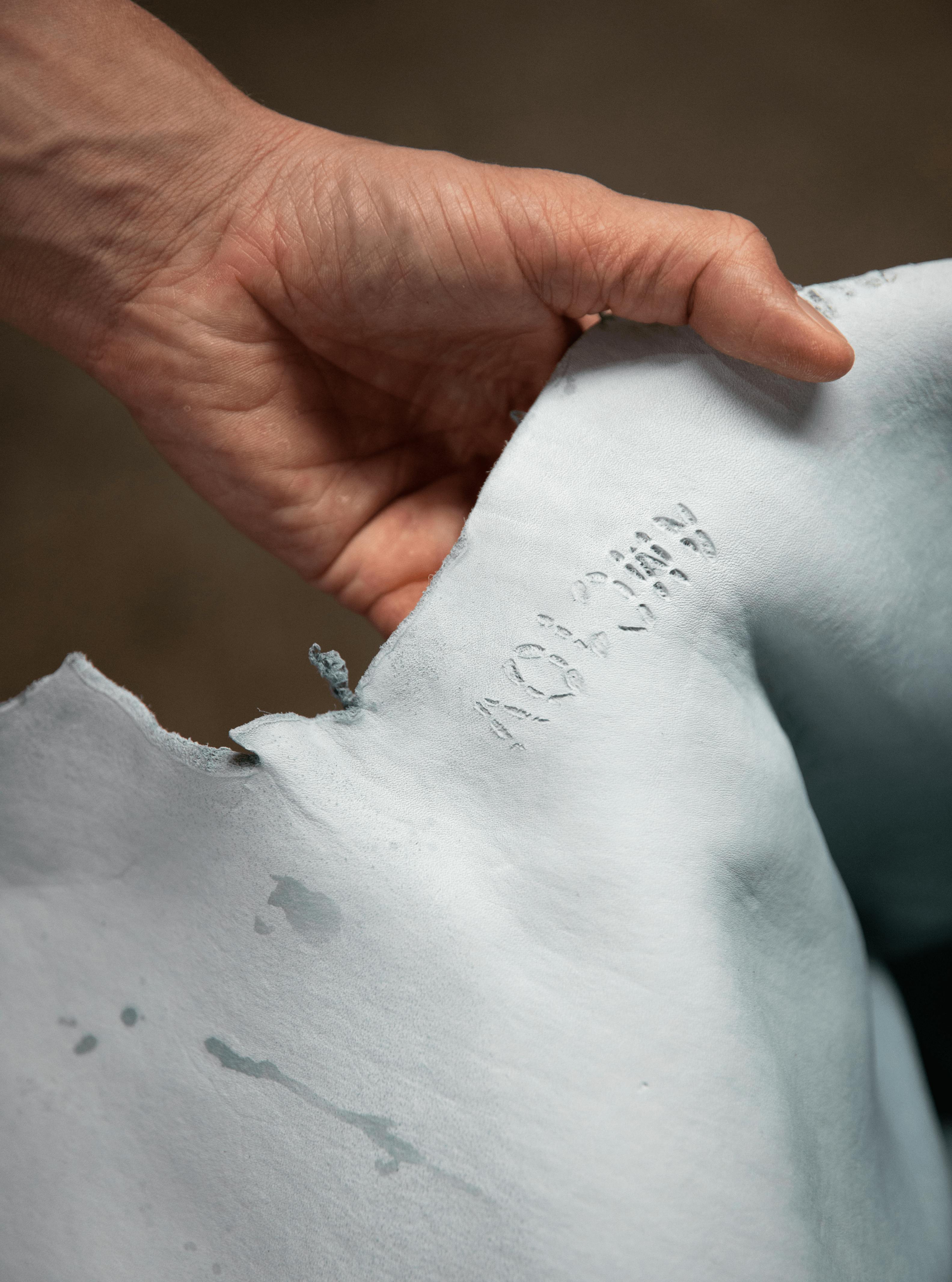
Tanned leather
Porto Alegre, 2011
© Cédric Amiot
Desde 2017, encontrar uma alternativa ecológica ao couro tornou-se um dos principais objetivos da equipe de suprimentos da VEJA.
Por isso, em 2019, lançamos um dos nossos primeiros modelos feitos com C.W.L., um material vegano e de base biológica, então produzido na Itália.
Embora tenha sido um avanço, não era possível rastrear o algodão usado nessa lona; o algodão não era orgânico.
Assim, decidimos reinventar o C.W.L. em 2020 e torná-lo totalmente rastreável.
Meses de pesquisa nos permitiram chegar a uma nova composição, agora produzida no Brasil, onde os tênis VEJA são fabricados.
Esse novo C.W.L. (54% de base biológica) oferece a mesma textura, maciez e impermeabilidade do couro tradicional.
É feito com lona de algodão 100% orgânico, comprada diretamente pela VEJA, e revestida com PU, óleo de mamona e amido de milho.
Nosso algodão 100% orgânico é produzido no Brasil e no Peru, por agricultores com os quais trabalhamos desde o início da marca.
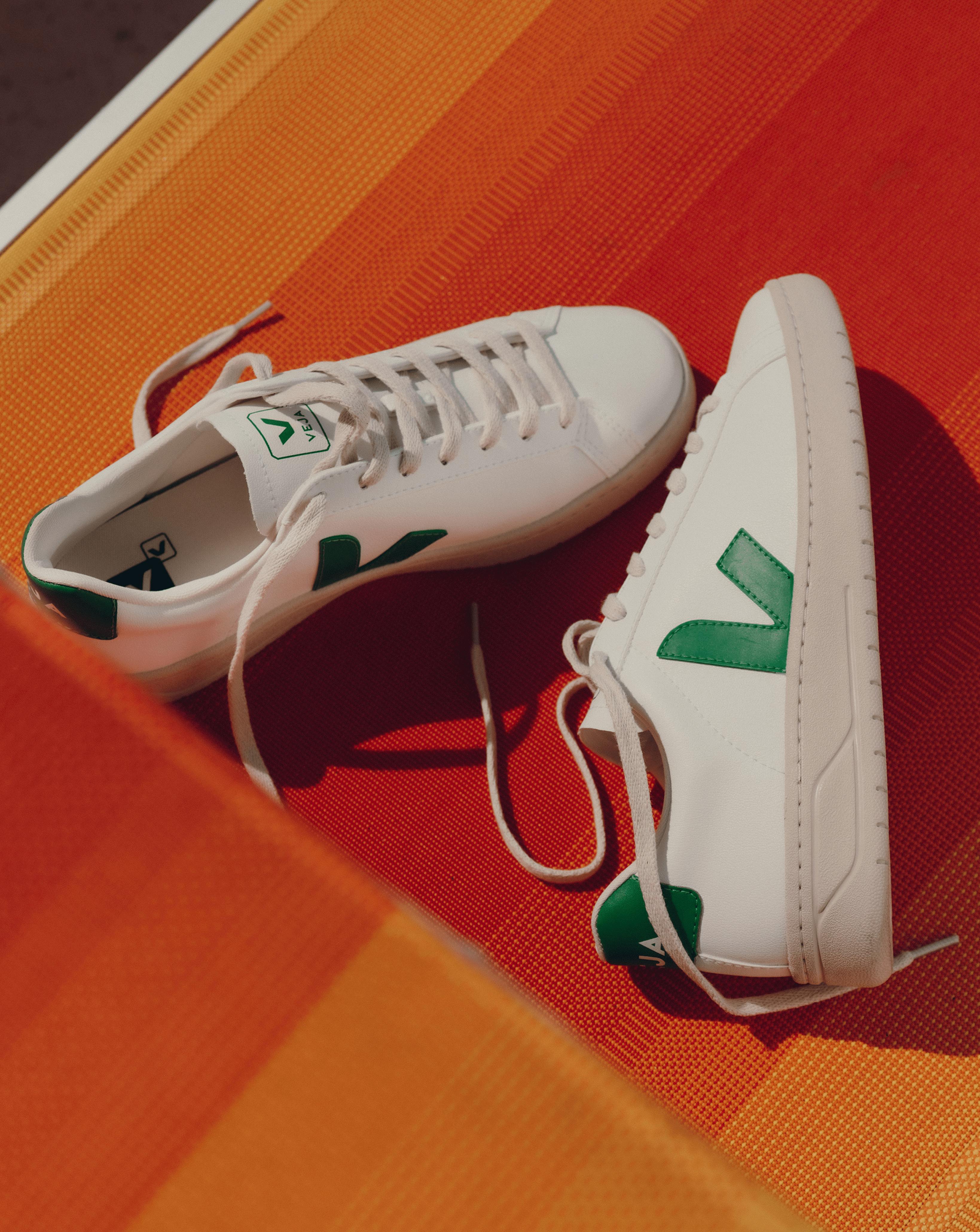
© Studio VEJA
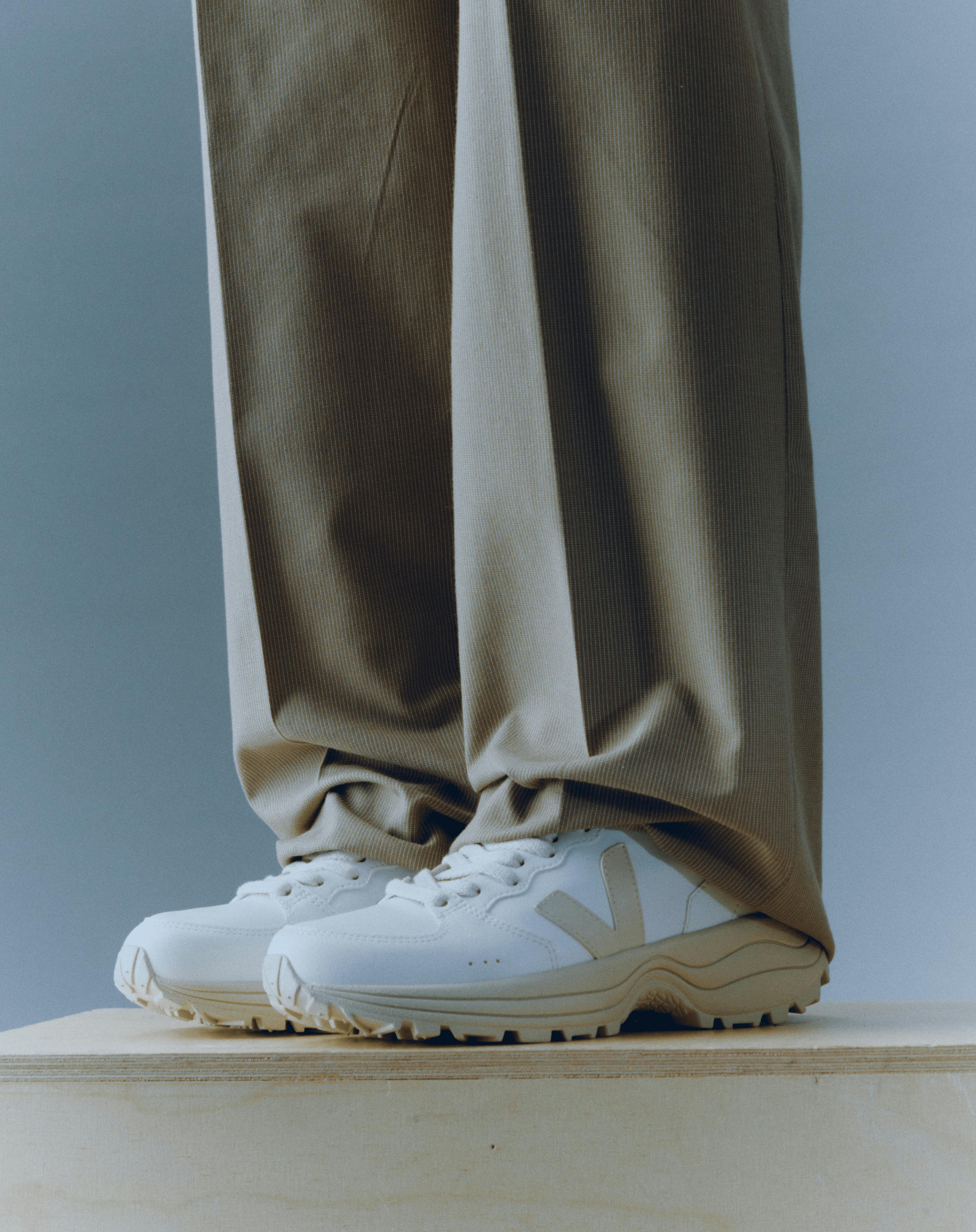
Atualmente, é difícil rastrear o setor de produção de milho.
Devido ao tamanho dos grandes produtores, a indústria do bioplástico carece de transparência.
Estamos buscando soluções para criar uma cadeia de reaproveitamento de resíduos da agricultura orgânica.
Sabemos que essas cadeias existem, mas o milho e a cana-de-açúcar, cultivados com e sem transgênicos, são frequentemente misturados durante o processo de fermentação nos tanques de armazenamento.
Além disso, o C.W.L. é composto por 50% de poliuretano, necessário para o processo de extrusão do milho sobre a lona de algodão.
Nosso camurça sintética é produzida no Brasil, em uma fábrica que monitora o uso de água e produtos químicos.
No entanto, por ser derivada do petróleo, nosso objetivo é encontrar alternativas 100% de base biológica.
Darwin
Em junho de 2020, a VEJA escolheu o DARWIN para abrir sua primeira loja voltada a conserto e reciclagem.
O DARWIN é um ecossistema urbano localizado em Bordeaux (França), que integra inovação ecológica e social para empresas e associações.
Foi ali que a VEJA idealizou um espaço-laboratório dedicado à restauração e reciclagem de pares usados de VEJA.
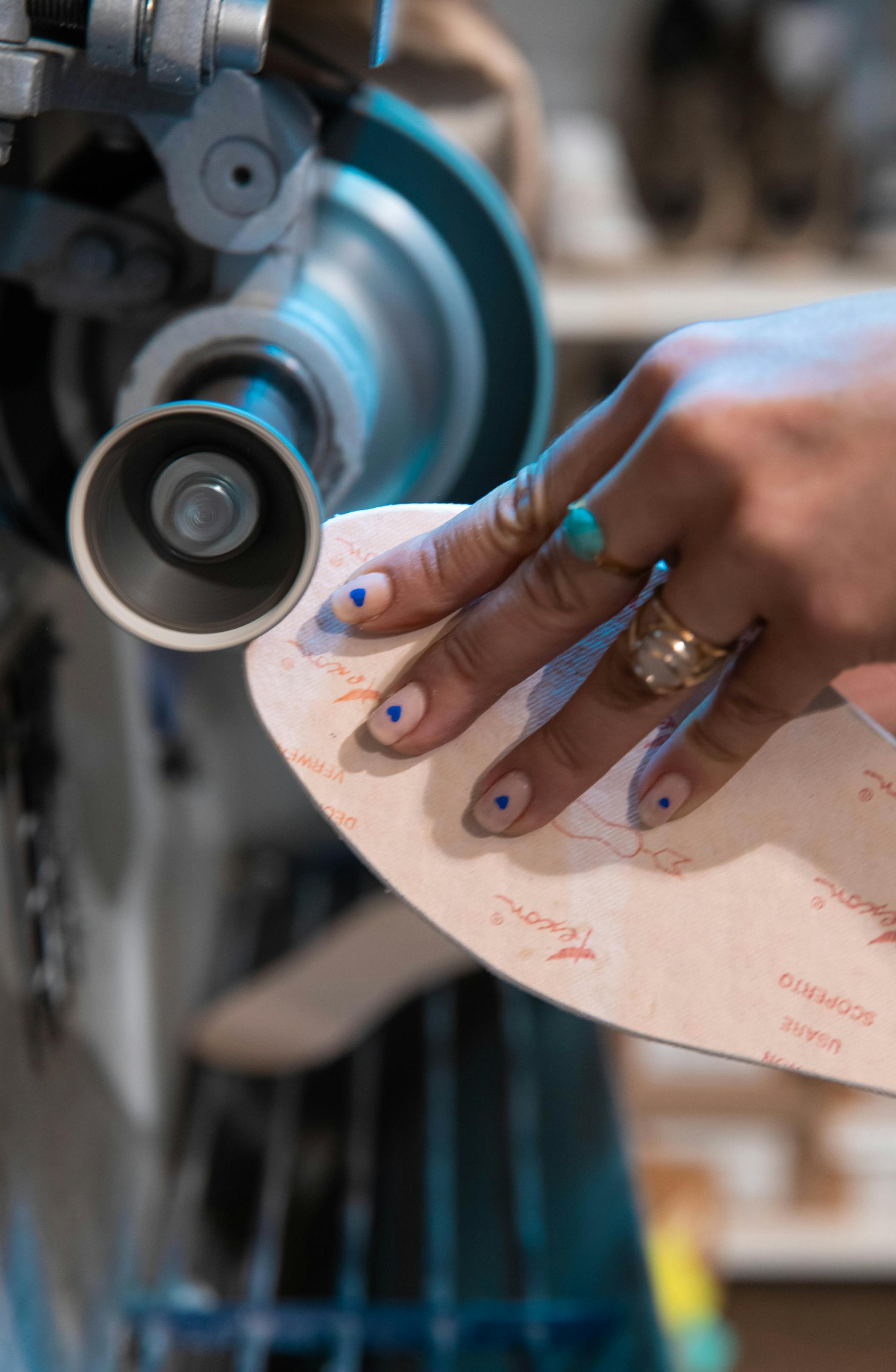
VEJA x Darwin
Bordeaux, 2021
© Antoine Huot
O projeto VEJA x DARWIN reúne protótipos nunca lançados, tênis com pequenos defeitos e pares de coleções antigas a preços reduzidos.
Montamos um sapateiro na loja para reparar tênis VEJA e de outras marcas, ajudando assim a reduzir o desperdício.
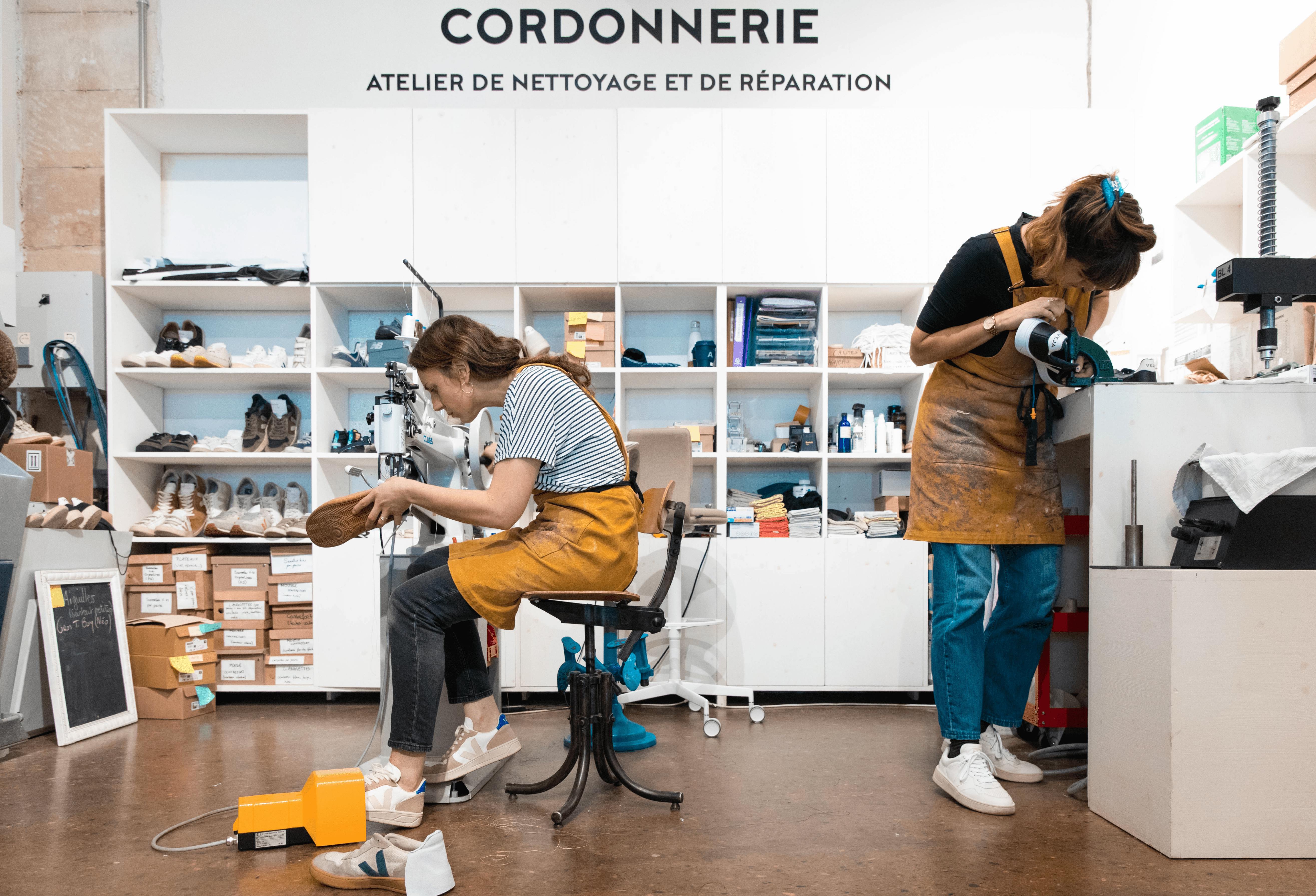
VEJA x Darwin
Bordeaux, 2021
© Antoine Huot
Desde a inauguração, nosso sapateiro já consertou mais de 50.000 pares de tênis VEJA e de outras marcas.
Para os pares que não podem ser reparados, instalamos caixas de reciclagem para coletar e dar uma segunda vida a esses calçados.
Uma segunda oficina de conserto VEJA foi aberta em julho de 2021, nas Galeries Lafayette, em Paris.
Lá, nosso sapateiro também repara tênis da VEJA, de outras marcas e diferentes tipos de calçados.
Assim como em Darwin, instalamos caixas de coleta para os pares irrecuperáveis, continuando a testar nosso programa de reciclagem.
Até o momento, nossos sapateiros consertaram cerca de 50.000 pares.
Diante do sucesso do serviço de reparo, percebemos que queremos continuar desenvolvendo esse projeto.
Atualmente, não podemos reciclar tênis de outras marcas, pois sua composição é difícil de rastrear e pode conter substâncias perigosas.
Ainda assim, pretendemos reutilizá-los em outros projetos (doações, arte, etc.)
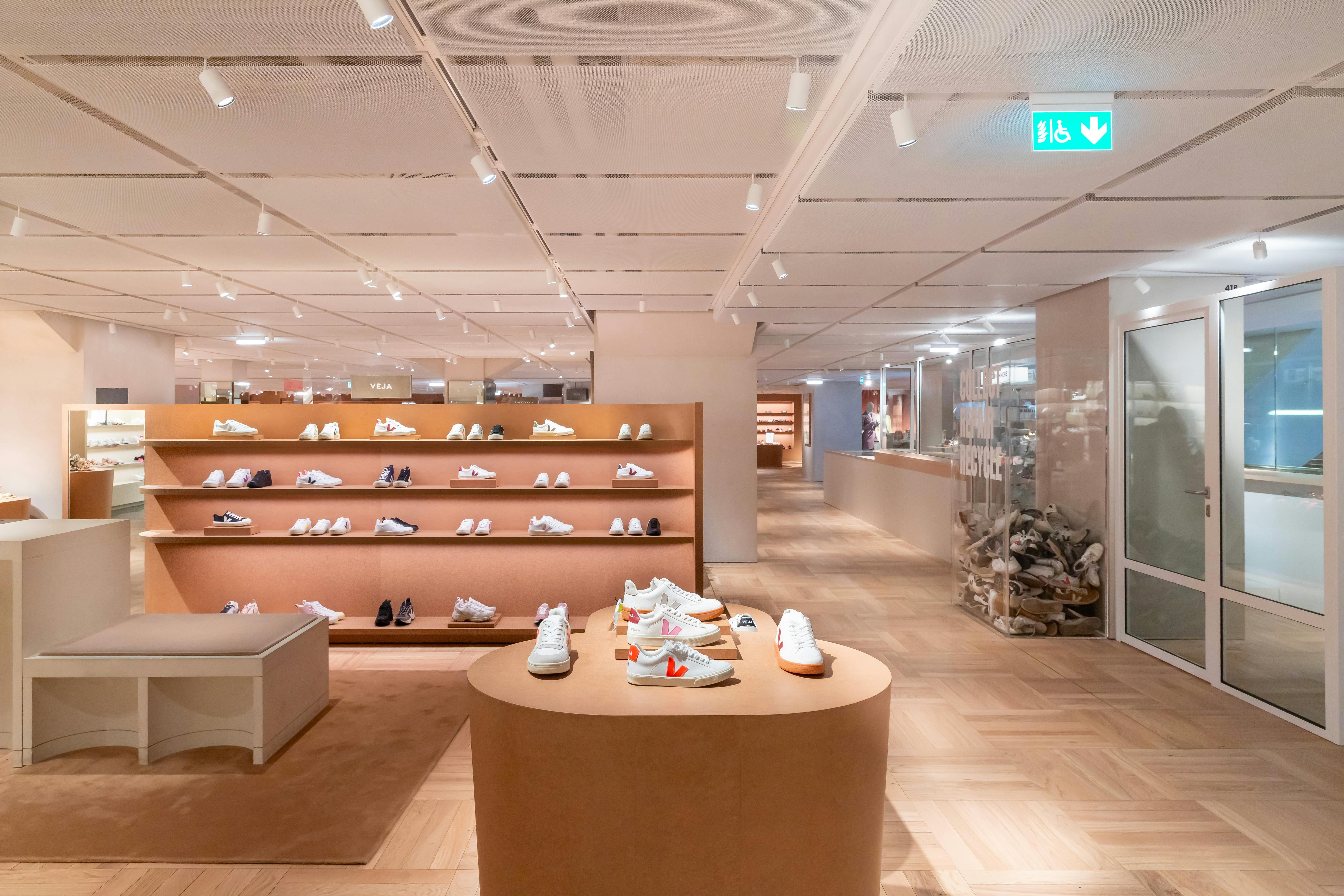
Cobbler shop in Galeries Lafayette
Paris, 2021
© Studio VEJA
Durabilidade
Trabalhar com materiais naturais pode, às vezes, comprometer a durabilidade. Nosso objetivo é que um par de VEJA dure ainda mais.
Uma sola feita de borracha nativa é mais resistente que uma sola plástica tradicional? Usar couro é mais ecológico do que usar plástico derivado 98% do petróleo? O algodão orgânico é mais resistente do que o cultivado com pesticidas?
Se conseguirmos responder sim a todas essas perguntas, nossa aposta terá valido a pena.
Consumo excessivo
Embora tenhamos orgulho dos nossos tênis e da forma como os produzimos, outras questões precisam ser refletidas:
Precisamos realmente comprar tantos pares de sapatos?
Sabemos que nosso produto é desejado e fashion, mas é necessário tratá-lo como um fetiche?
Precisamos sempre ter o modelo mais novo?
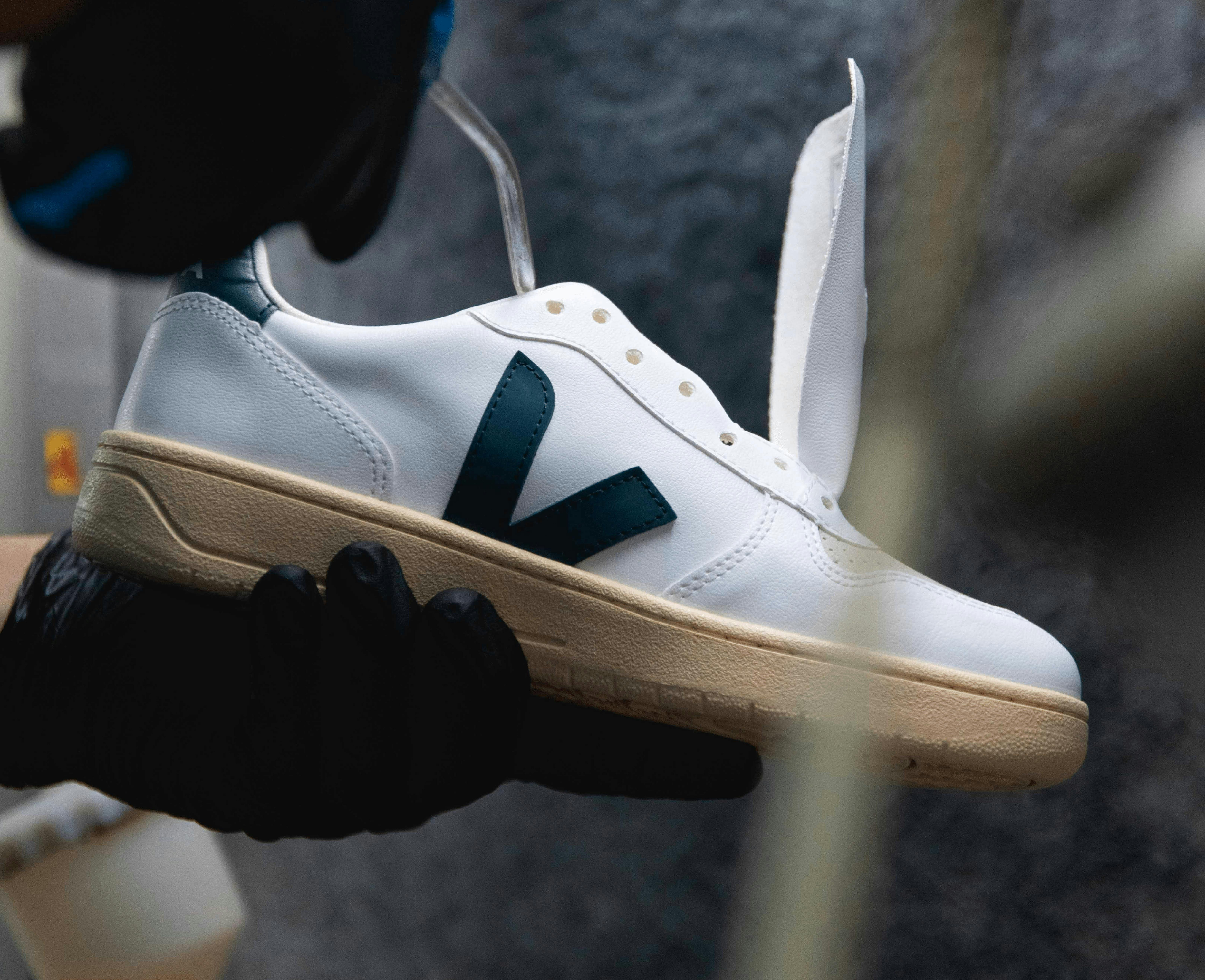
2021 Autumn-Winter lookbook
© Vincent Desailly
Governança
A VEJA é uma sociedade de responsabilidade limitada (LLC), e os dois fundadores são os únicos acionistas.
Em termos de governança, optamos por manter uma estrutura que pode parecer antiquada para uma empresa em crescimento, pois acreditamos que a democracia pode se diluir sob as pressões do capitalismo.
Por isso, trazer investidores externos para o capital da VEJA poderia comprometer a integridade do projeto.
Transporte
Na VEJA, usamos principalmente transporte marítimo para enviar nossos tênis do Brasil aos nossos centros logísticos.
Ocasionalmente, recorremos ao transporte aéreo.
Em 2022 e 2023, menos de 0,5% dos pares produzidos no Brasil foram enviados por avião.

